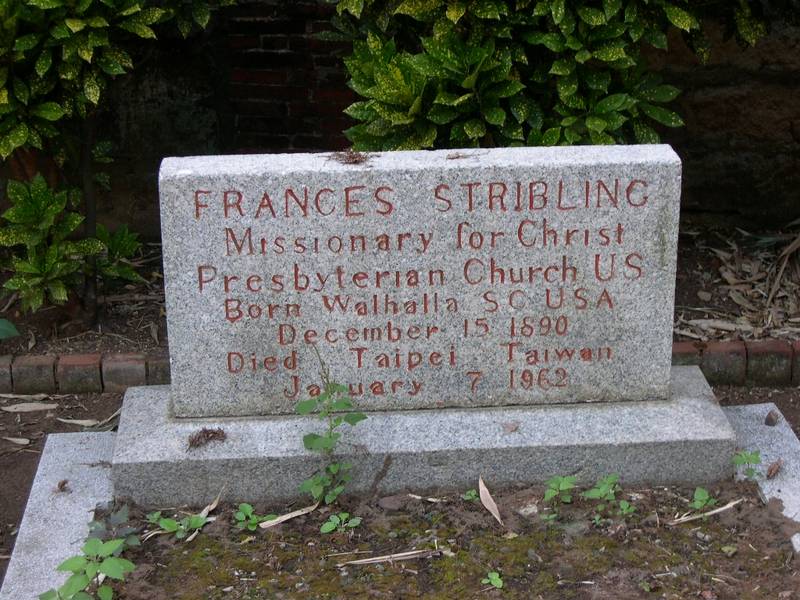
Canadian Chamber of Commerce in Taiwan
Promoting goodwill and understanding between the people of Canada and Taiwan since 1983.

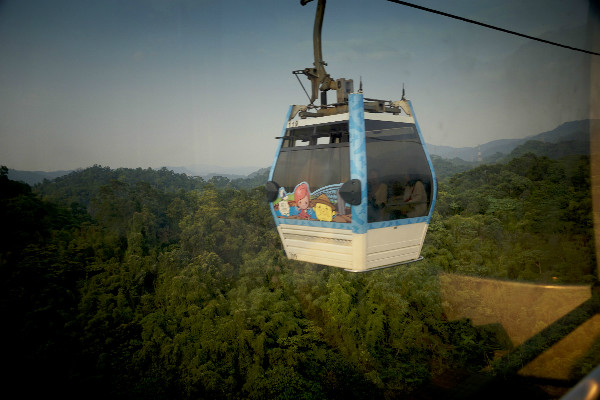
Taipei is such a spectacular city due to its variety of geographical features. Lush, green mountains surround every angle of the city, so escaping to nature is easily achieved by just hopping on the MRT.
One of my favorite places for an afternoon escape is Maokong, a mountain famous for growing local oolong and green tea. Maokong is located in the Wenshan district of Taipei, City and it is accessible by taking the brown line to Taipei Zoo station.
There is a gondola located adjacent to the MRT. The cable-car ride is about 20 minutes to the top, and it stops at the Taipei Zoo South Entrance, Zhinan Temple, and then finally Maokong.
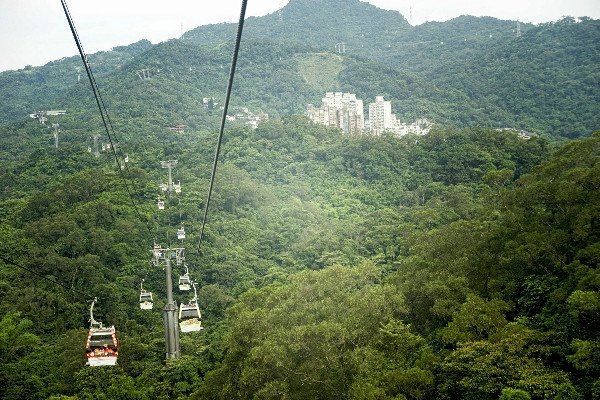
During the gondola ride, one can achieve a panoramic view of the city skyline and mountainous city border. For those seeking a more thrilling adventure, every fifth or sixth car features a glass bottom for more exhilarating views. If you are not afraid of heights, opt to stand in the “crystal cabin” line to experience this invigorating ride!

Once you arrive to the terminal station, meander along the ridgeway to find a teahouse or local restaurant. There are many restaurants that incorporate tea to infuse flavor in their dishes.
There are also delicious pineapple cakes, traditional Taiwanese dishes, or other local snacks to enjoy. I tried the tempura mushrooms from one of the cafes, and I must say they were scrumptious!
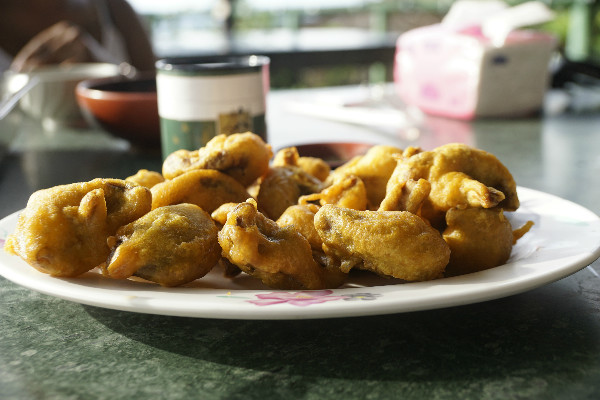
If you decide to enjoy the local tea, I recommend purchasing the option that comes with a presentation of the tea ceremony. The waiter or waitress will demonstrate how to properly steep and pour the tea for the best flavor and experience.
They will show you how to warm the cups and pot, and they will tell you how long to steep each brew. Drinking the Maokong tea on the mountain ridge will surely help you to unwind and relax from the bustling Taipei city life.
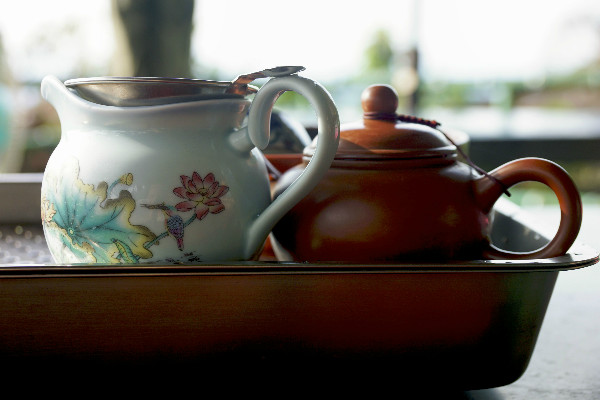
Maokong is open from 8:30am-9:30pm on weekdays and 8:30-10pm on weekends. Though tea is wonderful at anytime of the day, I highly recommend going in the late afternoon and staying for the sunset. It is a stunning sight watching Taipei light up in the night sky. Furthermore, be aware of weather, especially in the summer, as the gondola may close during thunderstorms or stormy weather.

The lighting of Kongming lanterns, also known as sky lanterns, has been a popular tradition for centuries throughout most of Asia. Like a hot air balloon, the lantern is propelled by a small flame that guides it up towards the sky during the Taiwan Lantern Festival each year.
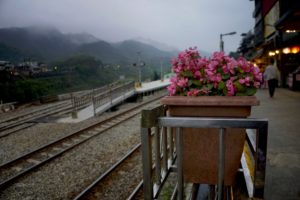
In Taiwan, lighting Kongming lanterns is especially popular during the Lunar New Year holiday. The locals believe that these lanterns carry their prayers to the sky to bring them a fruitful and fortunate new year.
In Pingxi, there is an annual festival where thousands of lanterns are floated into the sky together. It is said that the floating lights resemble a constellation of stars as the lanterns flicker and float away into the night sky.
Though watching thousands of lanterns fly into the sky together is a majestic site, fighting the crowds and getting to Pingxi can be a bit of a hassle. It takes some advance planning.
Personally, I would advise getting a hotel in Pingxi if you decide to go, otherwise it can be challenging getting back to Taipei after the festivities end.
If you are like me and prefer a more relaxing way of doing things, then I suggest visiting Shifen, just three train stop before Pingxi to send your lantern of hopes and dreams skyward.
Lighting lanterns is available at all times of the year, so you don’t have to wait until the new year festivities to have this special, memorable experience.
As soon as you exit the train at Shifen station, you will be in the heart of the charming old street. Shops selling souvenirs, Taiwanese sausages and other delicacies, and artisan crafts stalls fill the market along the tracks.
If you walk beyond the train tracks, you can visit the stunning and magnificent Shifen Waterfall, which is just a 15-minute walk from the town’s center.
Signs mark the waterfall trail, so it is easy to find upon arrival.
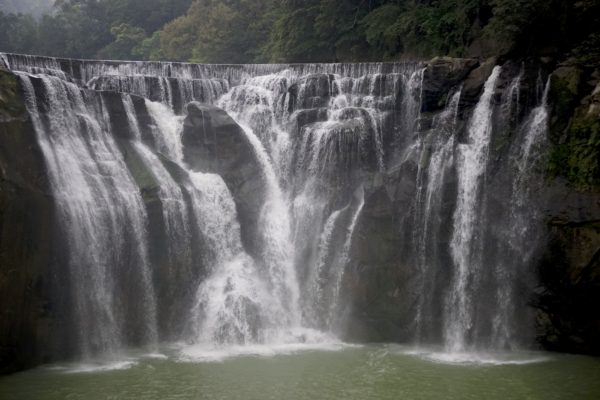
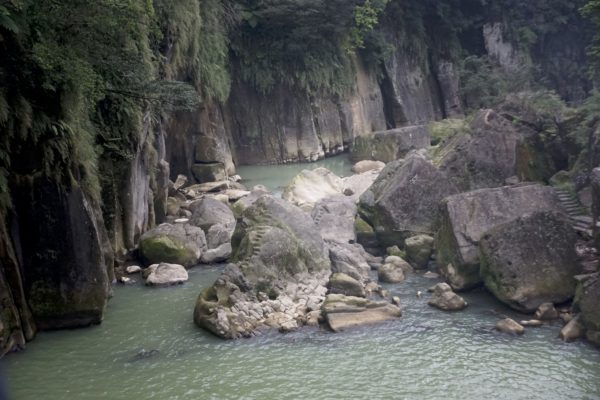
There are many shops selling the Konming lanterns in the market area. The train passes by every 30 minutes, so during this time gap, people go onto the tracks to send their lanterns into the sky. Before sending the lanterns up and away, you can decorate your lantern using a traditional Chinese paint brush and black ink.
The shops provide an easel-like stand to paint the lantern on the side of the train track. You are free to express yourself in anyway that you wish. Some people paint pictures, others write a message, and some traditionally write their prayers or wishes.
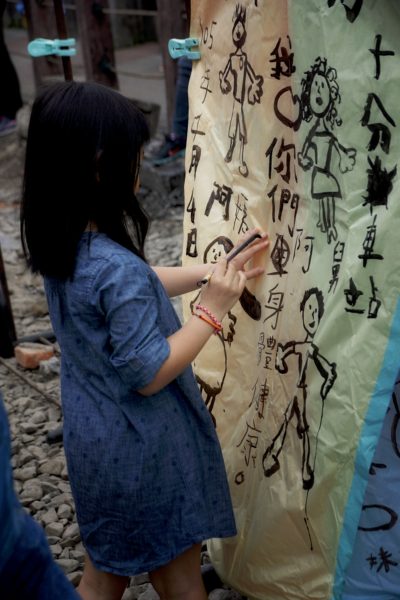
When I visited Shifen, I traveled with my brother, so we set up the stand in a way where we could not see what the other was paining until we were finished. It was amusing how differently we interpreted what to do with the lantern. Sending the lantern into the sky was a joyful moment, and it will be a memory I cherish for a long time.
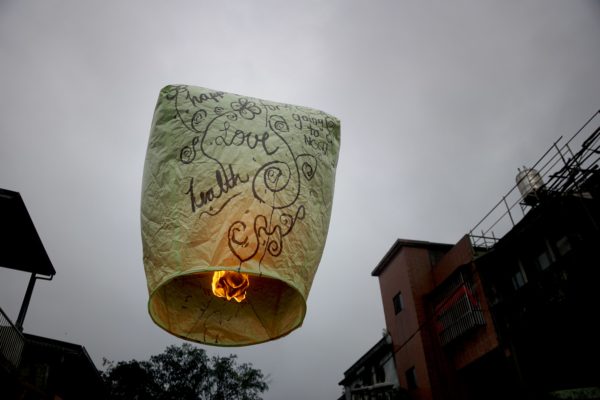
In order to go to either Shifen or Pingxi, take the northbound train from Taipei Main station to Ruifang station. Make sure not to take the Keelung northbound train.
Once you arrive at Ruifang station, you will transfer to the Pingxi Line. Shifen is only three stops down, while Pingxi is a total of six stops. Overall the trip takes about an hour and half, maybe two hours if you have to wait for the trains.
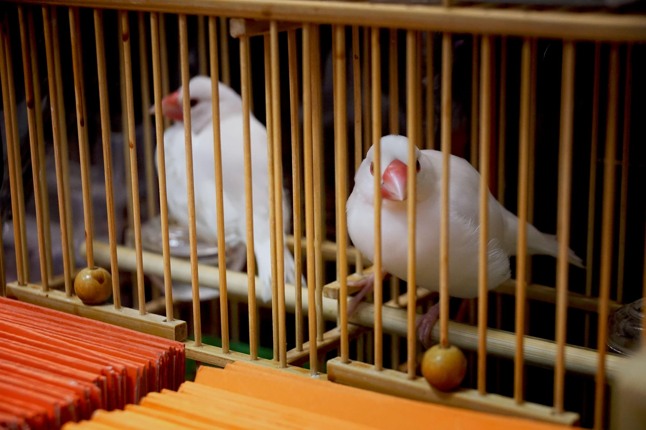
One of the greatest aspects of living and traveling in Taiwan is the opportunity to delve into the anomalous daily practices of local life. Experiencing the unfamiliar helps us to broaden our horizons while also gaining a deeper appreciation of local culture. In Taiwan many ancient Chinese practices and traditions have been preserved, so travelers and expats can easily seek out treasures from a bygone era.
One tradition that is still upheld and practiced regularly is fortune telling. Booths can be found throughout the city, usually around temples or night markets. In Taiwanese society, fortune telling is a revered and essential component of social and business culture.
The role of the soothsayer is essential when businessmen are making important investments or management decisions. They also help people socially by resolving personal issues and inner conflicts.
If you are traveling to Taiwan, the fortune telling booths may be particularly busy around holidays, and they are especially occupied in the days and weeks before the Chinese New Year. Many of these soothsayers use Chinese astrological charts to determine one’s fate. They also typically use techniques such as palm reading and investigating a client’s facial lines and features.
However, my favorite are the ones that use birds to chose the cards for the client.
Personally, I have always been enchanted by the idea of fortune telling. Though I am unsure how much truth may lie in the reading, I am still fascinated by the process and experience. One day, I suddenly had the urge to finally give Taiwanese fortune telling a try. My brother was visiting me, so I wanted to give him an experience that was truly unique to Taiwan. I was most enthralled at the opportunity to try out the bird fortune telling.
My brother and I went to the underground shopping market that is connected to the Longshan Temple MRT station. I chose this location, because I had previously been informed that there were English speaking translators and fortunetellers. Bird fortunetellers can be found by other temples and night markets; however many of these locations can only offer readings in Chinese.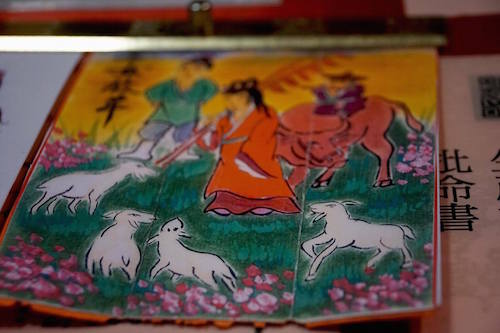
As I sat down at the booth I was greeted with warm smiles and curiosity. The translator explained to me that I needed to deeply ponder the question that I sought to have answered.
Once I knew my question, I was then told to speak it to the birds. It was a bit difficult to ask the birds my question with a straight face, however I did my best to act as serious and composed as I could.
I stared at the birds and uttered, “Will I go to graduate school at NCCU this fall?” Suddenly, the birds became very spirited. As the fortuneteller opened their cage, the birds began vigorously pecking at the bright orange envelopes. These feathered creatures were quite eager to determine my fate!
The fortuneteller then laid out my cards in a past, present, future layout. She told me I was very lucky and hardworking, and that I would soon benefit from my determination and hard work. Honestly, I found her interpretation to be quite vague, and it seemed she was just trying to please me. I wondered if she was reluctant to say negative things due to me being a foreigner.
I decided to dig a little further and ask her what I need to watch out for, or should I have any concerns or worries. She then took my hand and asked to look at my tongue. She told me that my father should take care of his heart, and I should eat more mushrooms. It was quite interesting, indeed!
Whether one believes in the credibility of these soothsayers, participating in Taiwanese fortunetelling is a memorable and alluring experience. I highly recommend paying a visit to these feathered fate readers to see what the future has in store!
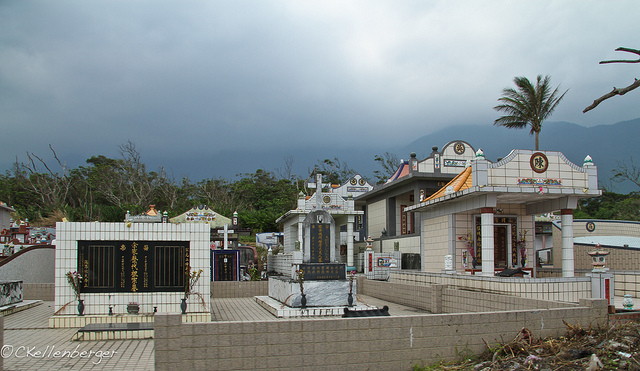
Every year on April 5, Taiwan honours its dead with a special festival. The festival is called Qingming, but it is often referred to as Tomb Sweeping Day. In Mandarin, Qingming is roughly translated to “Pure Brightness Festival,” and the day is intended for people to go outside and enjoy the spring weather while paying respects to their ancestors.
On Tomb Sweeping Day, the people of Taiwan traditionally go on family outings to visit the graves of their departed relatives. The families will usually pray at each grave site before sweeping and cleaning the grave as a sign of respect. Some families will even sing and dance at the gravesites and offer food and wine to the deceased.
Willow branches are a very common sight on Tomb Sweeping Day. It is believed that willow branches will fend off the evil spirits that roam around on Qingming. As such, people will carry willow branches with them, and some will even hang the branches from their front doors.
Another Qingming tradition you’re sure to come by is a bite-sized snack called caozaiguo. Caozaiguo consists of sweet dough made with rice flour, sugar and East Asian herbs that give the snack a green colour. The dough is then usually filled with ground meat or bean paste.
Since 1975, Tomb Sweeping Day has always been observed in Taiwan on April 5, in order to honour the death of Chiang Kai-Shek, a Chinese political leader who ruled Taiwan for 30 years. Chiang’s legacy is the subject of much debate in Taiwan, but Tomb Sweeping Day is still recognized every year on the anniversary of his death.
For Canadians in Taiwan that are looking to take part in the festival, the Danshui Foreign Cemetery in Taipei is the perfect place to go.
Many Canadians are buried in the cemetery, and the Canadian Chamber of Commerce has been maintaining the grounds every Tomb Sweeping Day since 1984. Don’t miss your chance to take part in this unique and meaningful festival!
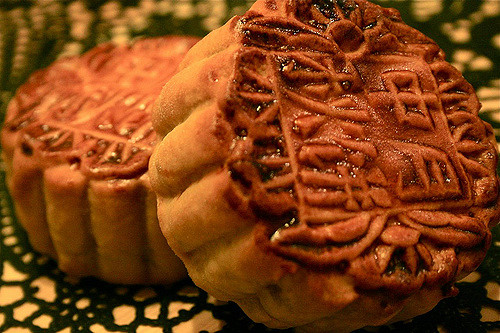
Right now, people all over the island of Taiwan are gearing up for a long weekend because of the Mid-Autumn Festival, which is also known as the Moon Cake Festival. It is an extremely important holiday in Taiwan and in other parts of Asia. It began around 3,000 years ago in Mainland China and it takes place during the autumn season of the Chinese lunar calendar. Depending on the lunar calendar, the date changes to different days every year.
This year, the Moon Festival will be held on Sunday, September 27th, but people throughout Taiwan will enjoy a long weekend that runs from Saturday, September 26th to Monday, September 28th.
In 2016, the Mid-Autumn Festival will take place on September 15th.
During these days, the moon becomes big and bright and it shines on us with its utmost brilliance. Traditionally, this is a time for moon watching, worshiping ancestors, and spending time with loved ones.
Friends and families offer moon cakes to each other while praying and celebrating this day. This time of year is always considered to be the best time for barbecues, and you will see many families out on the streets barbecuing and looking at the moon.
Moon cakes are a very special part of Moon Festival celebrations. These cakes are made with egg yolks, and you can sometimes see the resemblance to the moon in the center of each moon cake. There are all sorts of moon cakes, from fried to steamed, and of every flavor imaginable! Red bean, lotus seed, green tea and cream cheese are just a few of the flavors that these delicious cakes are available in.
Right now, shops all over Taiwan are offering moon cakes. Even Haagen Daz offers mooncakes, although you would need to get them home fast since they are made out of ice cream!
The Moon Cake Festival comes from an ancient story about the mythical Moon Goddess of Immorality. There are many stories, but most of them concerning the Mid-Autumn Festival are centered around a mythological archer named Houyi, who fell in love with a beautiful woman named Chang’e.
Legend has it that there was once a time when there were ten suns were in the sky. This phenomenon caused the Earth to burn, so the Chinese emperor ordered Houyi to shoot down nine of the ten suns.
He completed the mission flawlessly and was rewarded with the elixir of eternal life which, when drank, would immediately send him to the skies where he could reign as a god forever.
Through a sad twist of fate, Chang’e ended up consuming the elixir and it immediately drew her up into the skies where she became Goddess of the Moon.
Brave Houyi, of course, had no way to reach his wife and instead was resigned to watching her appear once a year on the surface of the moon. He began offering his prayers and sacrifices of food at his local temple in the hopes that she would rejoin him on Earth, and soon after, the local people began doing the same.
Another version of the Moon Cake Festival comes from the uprising of the Chinese against the Mongol rulers during the 14th century. Zhu Yuan Zhang, the Chinese rebel leader, was planning a rebellion. Zhu Yuan Zhang and his warriors knew that the Mongols didn’t eat moon cakes, and they concocted a scheme to send messages to one another that were hidden in the center of the mooncakes.
Inside each moon cake was a piece of paper with the message, “Uprise on the 15th day of the autumn season”. On that day, with the precise coordination in hand, the Chinese succeeded in overthrowing their oppressors.
Under Zhu Yuan Zhang, the Ming Dynasty (1368 to 1644) was established. After that, the Moon Cake Festival was forevermore celebrated to commemorate this historical event. This is also why some people call the moon cake the symbol of Chinese reunion”.
Whatever your beliefs about how the Mid-Autumn Festival came about, one thing is certain – people around the world will be gazing at the moon and cherishing this special time of the year with their loved ones.
About the Author
 Bilguun Namsrai is a Mongolian student who has been studying in Taipei, Taiwan since 2012. She completed her final year of undergraduate in capital city of Mongolia where she studied International Law.
Bilguun Namsrai is a Mongolian student who has been studying in Taipei, Taiwan since 2012. She completed her final year of undergraduate in capital city of Mongolia where she studied International Law.
Currently, she is a senior graduate journalism student at Chinese Culture University.
While studying, Bilguun has always had an interest in law and journalism field. Upon graduation, Bilguun is looking to start her career as a news reporter, anchor in broadcasting channels, or as a contract lawyer. She is a member of the Foreign Students Club in Taiwan.
REFERENCE LIST:
Wikipedia.org
www.yoursingapore.com
www.traditions.cultural-china.com
www.chinatownology.com